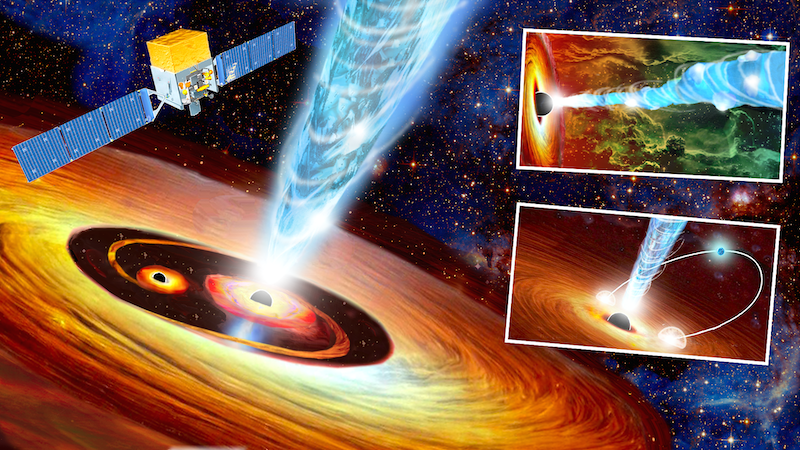The international collaboration of NASA’s Fermi Large Area Telescope (LAT) mission, in which INFN participates, analysing over 15 years of observations, has confirmed a significant periodic oscillation in the gamma-ray electromagnetic flux and in other electromagnetic bands emitted by the relativistic jet of blazar PG 1553+113, about 5 billion light-years from Earth. The results of the observations were illustrated in a study published in The Astrophysical Journal. The first indication of a periodic oscillation capable of modulating the observed brightness at high energy emitted by PG 1553+113 was the focus of a paper written by the same research group within the LAT Collaboration in 2015. Now, nine years later, the oscillation is confirmed with greater significance thanks to the continuous monitoring of the sky in gamma rays, conducted by Fermi LAT. This discovery represents the first cyclic gamma-ray emission on the scale of years that has ever been detected with sufficient significance from an active galaxy. This could offer new insights into the physical processes close to the supermassive black hole and its relativistic jet.






